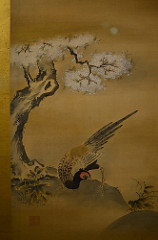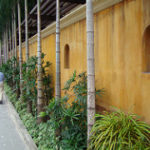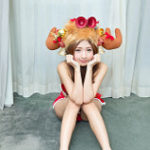Collecting Asian Art
Collecting Asian Art
Acquiring Started out
I give beginning collectors the following formula for approximately identifying the worth of an artwork object:
Value = Resources + Age + Workmanship.
What this signifies and how you apply it could mean the difference amongst acquiring a collection that is merely fairly and a single that has investment possible, or will be a considerably-appreciated inheritance.
Resources:
The beauty and scarcity of the raw materials employed in a piece, along with other variables such as hardness and durability (or lack of it), include up to what we may possibly call intrinsic value. Merely put that is the worth of the raw materials itself, separate from the high quality of the carving or its historical significance or any of the other aspects that include to the desirability of the piece. Figuring out intrinsic value demands some knowing of the relative worth the raw materials carried for the duration of the time time period the artisan was working it.
Jade and ivory, for instance, have had worth considering that extremely early in the Asian cultures. Specific kinds of woods, the roots of certain trees, the burl of the root and other natural substances such as amber, also have discovered their way into some of the very best representations of Asian art. With the exception of bronze and a constrained quantity of cast supplies, most of the supplies employed in Asian artwork could be identified naturally or traded. When altered in some way, by carving or firing, and turned into art, they grew to become valuable.
The most critical differentiation is normally in between the all-natural resources and man-manufactured imitations.
Age:
The age of an object places it in background, offers it significance as an historical artifact and usually can make the object rare or unique. In buy to make sound decisions on your purchases, it is critical to be acquainted with the essential points in Asian histories and how they relate to the value of an object. This timeline charts the main epochs in Chinese historical past. [Never comprehend the formatting of the time intervals. Make uniform? LJ]
Xia [Hsia] Dynasty 2205 – 1766 B.C.
Shang Dynasty 1766 – 1121 B.C.
Zhou [Chou] Dynasty1027 – 256 B.C.
Western Zhou1027-771 B.C.
Eastern Zhou770 – 221 B.C.
Spring and Autumn Period1066-221 B.C.
Warring States Period770 – 221 B.C.
Qin [Ch’in] Dynasty221 – 207 B.C.
Han Dynasty206 – A.D. 220
Western Han206 B.C. – A.D. 9
Eastern HanA.D. 25 – 200
6 dynasties Time period /
Northern and Southern Dynasties 220 – 581 A.D.
3 Kingdoms220 – 280
Wei220 – 265
Shu-Han221 – 263
Wu222 – 280
Jin [Chin] Dynasty265 – 420
Western Jin265 – 317
Eastern Jin317 – 420
Southern Dynasties420 – 588
Song [Sung]420 – 479
Qi [Ch’i]479 – 502
Liang502 – 557
Qen [Ch’en]557 – 589
Northern Dynasties386 – 588
Northern Wei386 – 534
Eastern Wei534 – 550
Western Wei535 -556
Northern Qi [Chi]550 – 577
Northern Zhou [Chou] 557 – 581
Sui Dynasty581 – 618
Tang [T’ang] Dynasty618 – 907
5 Dynasties or Wu Tai907 – 960
Later on Liang907 -923
Later on Tang [T’ang]923 – 936
Later Jin [Chin]936 – 947
Later on Han 947 – 950
Later on Zhou [Chou]951 – 960
Ten Kingdoms907 – 979
Liao Dynasty907 – 1125
Song [Sung] Dynasty960 – 1279
Northern Song960 – 1127
Southern Song1127 – 1279
Western Xia [Hsi-hsia] Dynasty 1037 – 1227
Jin [Chin] Dynasty1115 – 1234
Yuan Dynasty (Mongol)1206 – 1368
Ming Dynasty1368 – 1644
Hongwu [Hung-wu] Period1368 – 1398
Jianwen [Chien-wen] Time period 1399 – 1402
Hongxi [Hung-hsi] Period1424 – 1425
Xuande [Hsuan-te] Period1426 – 1435
Zhengtong [Cheng-t’ung] Period1436 – 1449
Jingtai [Cheng-t’ai] Period 1450 – 1456
Tianshun [T’ien-shun] Period1457 – 1464
Chenghua [Ch’eng-hua] Period 1465 – 1487
Hongzhi [Hung-chih] Period 1488 – 1505
Zhengde [Cheng-te] Period1506 – 1521
Jiajing [Chia-cheng] Period1522 – 1566
Longqing [Lung-ch’ing]1567 – 1572
Wanli [Wan-Li] Time period 1573 – 1610
Tiachang [T’ai-ch’ang] Time period 1620
Tianqi [T’ien-ch’i] Period1620 – 1627
Chongzhen [Ch’ung-chen] Period 1627 – 1644
Qing [Ching] Dynasty (Manchu)1644 – 1911
Shunzhi [Shun-chih] Period1644 – 1661
Kangzi [K’ang-His] Period1622 – 1722
Yongzheng [Yung-cheng] Period1723 – 1735
Qianlong(Ch’ien-lung) Period1735 – 1796
Jiaqing [Chia-Ch’ing] Period1796 – 1820
Daoguang [Tao-kuang] Period1821 – 1850
Xianfeng [Xsien-feng] Time period 1851 – 1861
Tongzhi [T’ung-chih] Period1862 – 1874
Guangxu [Kuang-hsu] Period1875 – 1908
Xuantong [Hsuan-t’ung]1908 – 1911
Republic of China1912 – 1949
Hongxian Period (Yuan Shikai)1915 – 1916
People’s Republic of China 1949 – Current Day
You ought to also turn out to be acquainted with Japanese history, the Shogunates and the influence each exerted on the artisans and arts of each epoch.
A far more recently crucial and worthwhile sub-class of “age” is “provenance.” This is the historical past, or lineage, of a piece. A Ming vase that can be documented as having been offered in the 1970’s at an important action, for illustration, would be really worth a lot of occasions far more than an “unknown” Ming vase. A piece that has been in the J.P. Morgan collection or the Herbert Hoover porcelain collection has further worth simply because of its “essential provenance.”
Specific time intervals have also turn into especially collectible and useful. Most just lately is the 1950’s, the period of the Cultural Revolution when the Chinese created pieces with Communist “taste.” For several many years these pieces had very minor marketplace value in the West. As the world has changed, the Communist-inspired pieces are getting to be increasingly collectible.
Workmanship:
Just as resources have intrinsic worth, the talent of the artisan commands a premium. Measurable criteria contain the acceptable and greatest use of the raw materials. This often determines, as does the artistry involved, the good results of a carving or painting. Whilst one particular workman can consider the best jade and generate one thing that men and women do not find pleasing and will not want to show, an additional can consider a mediocre material and generate a masterpiece that folks will battle to own.
It is essential also to recognize the mindset of the Asian artisans, particularly in the earlier intervals. A carver, for instance, would usually have been well educated and quite very likely a poet or scholar in his own correct. In a single situation, he could be walking by the Yangtze River when he spies an exciting stone in the shallows. He recognizes it as jade. Choosing it up and turning it in his hand, he envisions a bird. He will take the stone to his workshop and carves the bird. In the mind of the maker, he would have been removing the extra stone and revealing the bird that was current in the stone all the time. The artistry involved, and the care this carver took to reveal this bird as he originally envisioned it in the jade reflects effortlessly in the greatest works of Asian art.
To sum up: get to know your resources allow yourself the possibility to turn out to be familiar with the key historical periods and what varieties of objects they producedand , usually take into consideration the technical skill of the maker.





















Leave a Reply